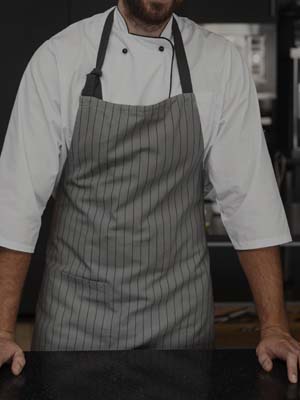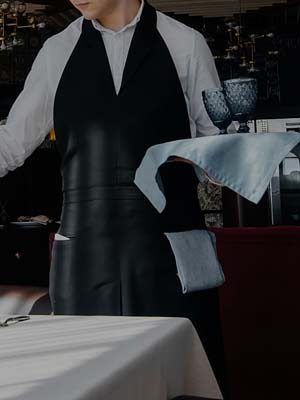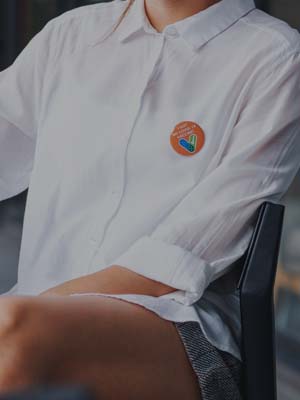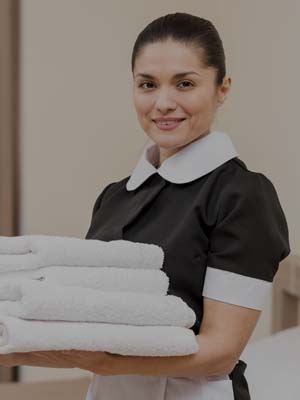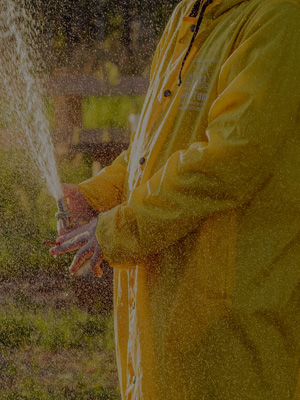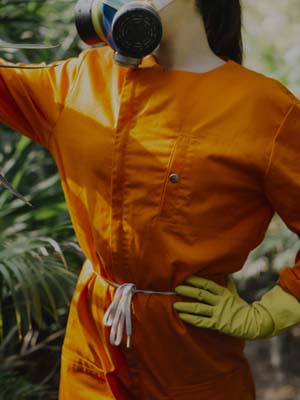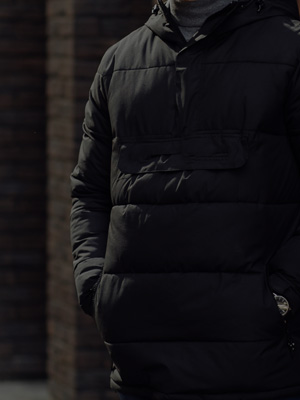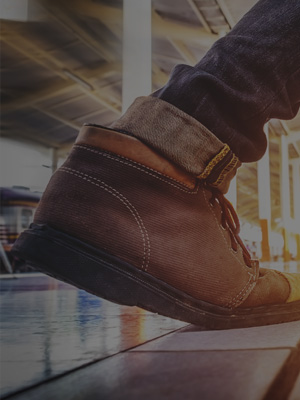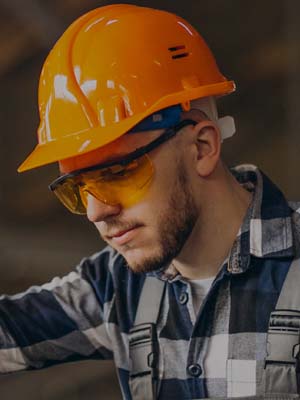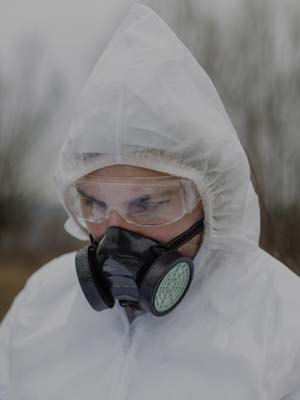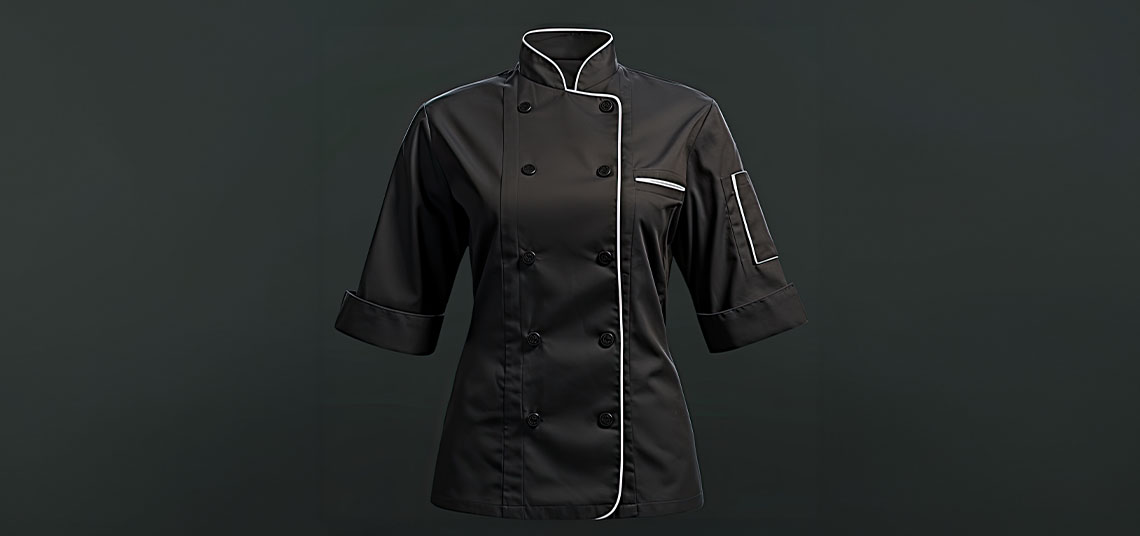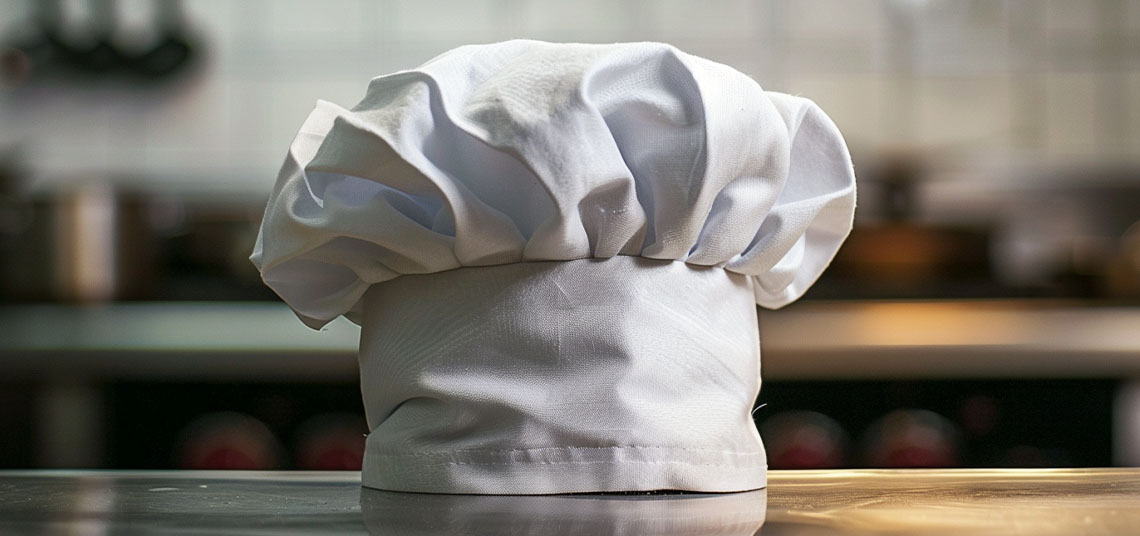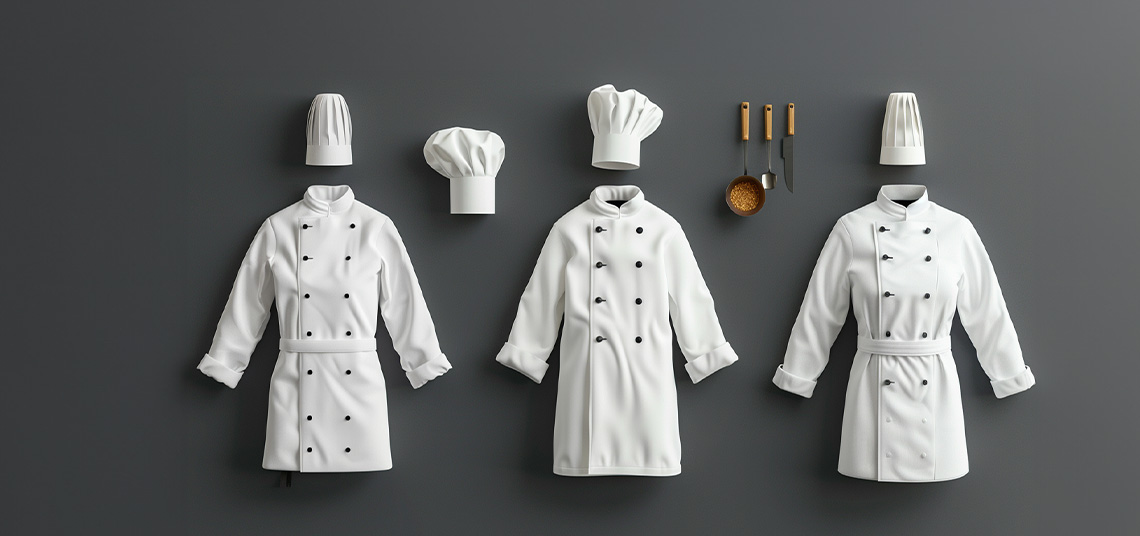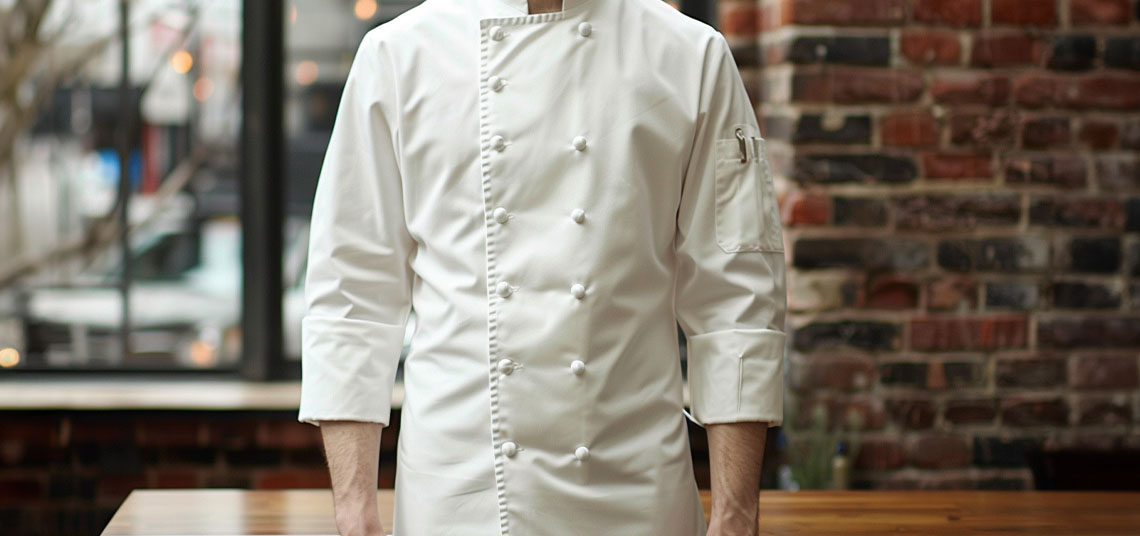Chef Uniforms : 4 Important Features
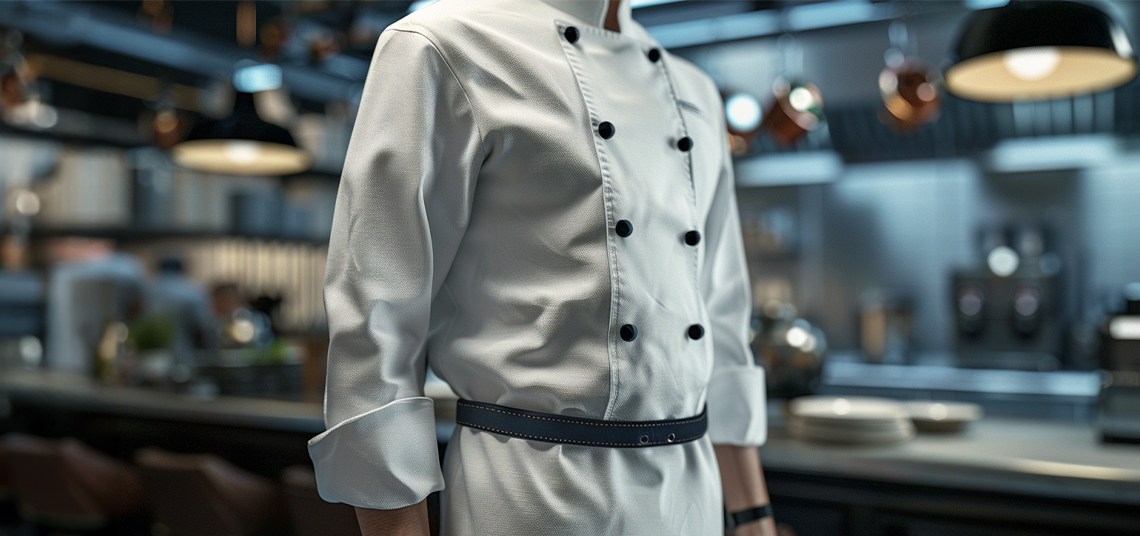
Chef uniform plays a significant role in the culinary world, not only as a set of clothing but also as a symbol of professionalism, hygiene, and tradition. Chef uniforms are crucial in ensuring the safety and efficiency of kitchen staff, as well as in maintaining kitchen standards. In this article, we will examine in detail the four essential features that a chef uniform must have: durability, comfort, safety, and professionalism.
Chef Uniforms
A chef uniform is a critical set of clothing for those working in professional kitchens. Beyond being an aesthetic element, chef uniforms are designed to maintain hygiene, safety, and professionalism standards in the kitchen. These uniforms help kitchen staff stay clean and organized while also enhancing safety in hot, busy, and risky kitchen environments. The functionality of a chef uniform enables chefs to perform their tasks optimally and helps optimize the performance of kitchen teams.
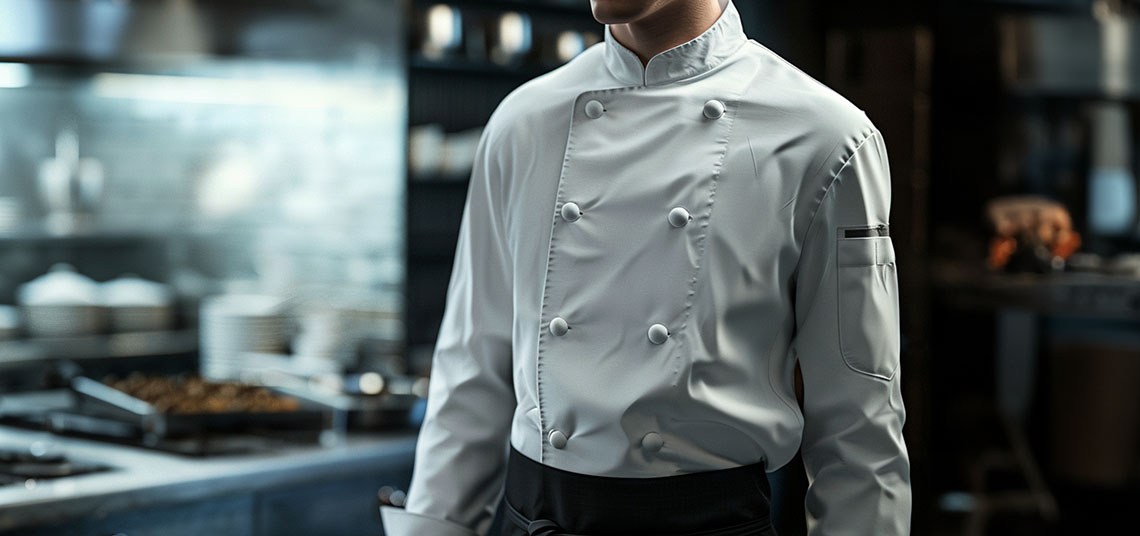
The Importance of Chef Uniform
A chef uniform goes beyond being just an item of clothing in the culinary world. For every chef working in a professional kitchen, the uniform represents cleanliness, order, and professionalism. Chef uniforms are considered symbols of discipline and seriousness in the workplace. Additionally, they help maintain hygiene standards in the kitchen. In kitchens where hundreds of meals are prepared daily, chef uniforms allow staff to remain clean and orderly. Chef uniforms also play a crucial role in ensuring the safety of chefs in the kitchen. These uniforms provide protection against high temperatures and sharp tools, minimizing workplace accidents.
History and Evolution
The history of the chef uniform dates back to the 19th century. Initially popularized by the renowned French chef Auguste Escoffier, chef uniforms were intended to give kitchen staff a professional appearance. Escoffier believed that chef uniforms reflected the chefs’ respect for their profession and reinforced kitchen discipline. The chef uniforms of that era were made of heavy cotton fabrics designed to protect chefs from the rigors of the kitchen.
Over time, chef uniforms have undergone significant evolution. Today, modern chef uniforms are made from lighter and more breathable fabrics, enhancing the comfort and mobility of chefs. Additionally, with technological advancements, anti-bacterial and stain-resistant fabrics have also started to be used. These innovations have further elevated the hygiene standards of chef uniforms and ensured the health protection of kitchen staff.
Today, chef uniforms are widely used not only in professional kitchens but also in culinary schools and among amateur cooking enthusiasts. These uniforms ensure that chefs maintain a professional appearance and guarantee safety and hygiene during the cooking process. Therefore, chef uniforms have become an indispensable element in every kitchen.
1. Durability
The durability of a chef uniform is extremely important for kitchen staff to be able to use it for long periods under intense and demanding working conditions. These uniforms must be designed to withstand frequent washing and heavy use. This durability provides both longevity and cost advantages. A durable chef uniform maintains professionalism and safety in the kitchen while also being an economical investment for the business.
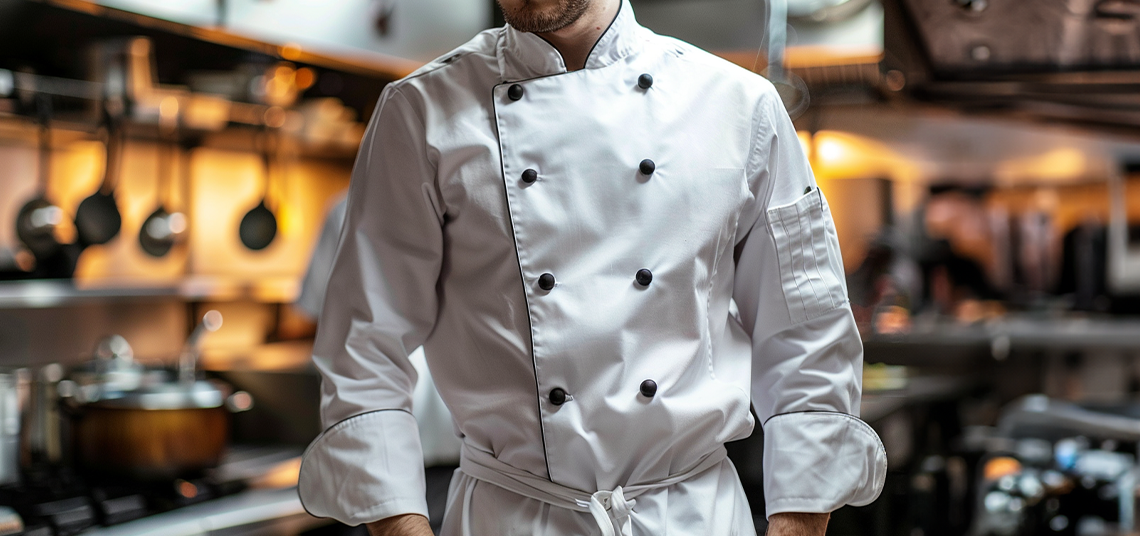
Material Selection
One of the most critical factors determining the durability of chef uniforms is the choice of materials. Cotton, polyester, and blends of these two materials are commonly preferred. Cotton is favored for its natural and breathable properties, while polyester enhances durability and wrinkle resistance. Blended fabrics combine the advantages of both materials, making chef uniforms both comfortable and durable.
Cotton: Cotton is widely used in chef uniforms. Its natural structure allows it to be breathable and reduces sweating. However, entirely cotton fabrics may wear out more quickly, so they might not be sufficient for durability on their own.
Polyester: Polyester fabrics offer high durability and wrinkle resistance. Polyester retains its shape even with prolonged use and is resistant to frequent washing. However, entirely polyester fabrics may not be sufficiently breathable, which is why they are usually blended with cotton.
Blended Fabrics: Cotton and polyester blended fabrics are the most commonly preferred option in chef uniforms. These fabrics combine the breathability of cotton with the durability of polyester, allowing chefs to wear uniforms that are both comfortable and durable.
Longevity
These uniforms made from durable materials offer long-lasting use. A long-lasting chef uniform maintains its shape and structure despite frequent washing and heavy use. This reduces the need for chefs to constantly purchase new uniforms, resulting in cost savings. Long-lasting uniforms are also more sustainable environmentally because they need to be replaced less frequently.
Resistance to Frequent Washing: Chef uniforms must be frequently washed to maintain hygiene standards. Therefore, it is essential that durable fabrics retain their form and durability after washing. High-quality chef uniforms can be washed multiple times without fading, shrinking, or deforming.
Stitching and Design Quality: The longevity of chef uniforms is also significantly influenced by the quality of stitching and design. Reinforced stitches reduce the risk of tearing or fraying. Similarly, ergonomic designs enhance the mobility of chefs while also increasing the durability of the uniform.
Ease of Maintenance: Durable chef uniforms also offer ease of maintenance. Stain-resistant and easy-to-clean fabrics reduce the workload of chefs working in the kitchen. Additionally, wrinkle-resistant fabrics save time by reducing the need for ironing.
2. Comfort
The comfort of a chef uniform is extremely important for professionals who spend long hours in the kitchen. Comfortable and well-fitting uniforms directly affect chefs’ performance and enable them to do their jobs to the best of their abilities. Therefore, chef uniforms should be made from breathable fabrics that allow for freedom of movement. A comfortable chef uniform increases work efficiency and helps chefs work more effectively in the kitchen.
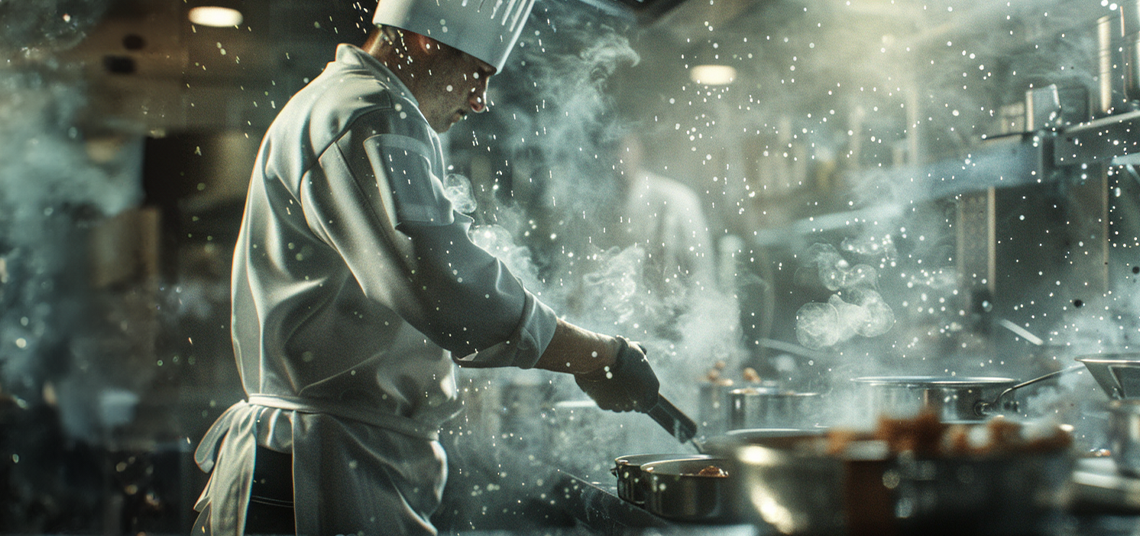
Breathability
Breathability is one of the most important features that ensure the comfort of chef uniforms. Kitchens are typically hot and busy environments, so it is crucial for uniforms to be breathable to regulate body temperature. Breathable fabrics allow sweat to evaporate, helping chefs stay cool.
Fabric Selection: Cotton and blended fabrics are the best options for ensuring breathability. Cotton, as a natural material, allows the skin to breathe and reduces sweating. When mixed with polyester, it enhances durability and wrinkle resistance, allowing chefs to wear uniforms that are both comfortable and professional-looking.
Technological Innovations: Today, the fabrics used in chef uniforms are equipped with technological innovations. Anti-bacterial and quick-drying fabrics maintain hygiene standards while also providing comfort. These features help chefs feel comfortable and fresh even during intense working conditions.
Freedom of Movement
Another important feature that enhances the comfort of chef uniforms is freedom of movement. Chefs are constantly moving in the kitchen and need to be able to move comfortably while performing various tasks. Therefore, the design and fabric of chef uniforms should allow chefs to move freely.
Ergonomic Design: Ergonomically designed chef uniforms increase freedom of movement. Tailored but non-restrictive cuts allow chefs to move comfortably. Additionally, flexible fabrics provide comfort during movement and enhance job performance.
Flexible Fabrics: Fabrics with flexible and stretch properties allow chefs to bend, reach, and move quickly in the kitchen. These types of fabrics ensure comfort over long hours and reduce fatigue.
Functional Details: Functional details in chef uniforms also support freedom of movement. For example, strategically placed pockets allow chefs to easily carry the tools and materials they need. Additionally, easily accessible buttons and zipper systems provide practicality and allow for quick dressing.
3. Safety
The safety advantages provided by chef uniforms play a critical role in protecting kitchen staff from workplace accidents. Kitchen environments are filled with various hazards such as hot surfaces, sharp tools, and slippery floors. Therefore, chef uniforms must be designed with safety as a priority. A safe chef uniform allows chefs to perform their duties securely and helps prevent potential accidents.
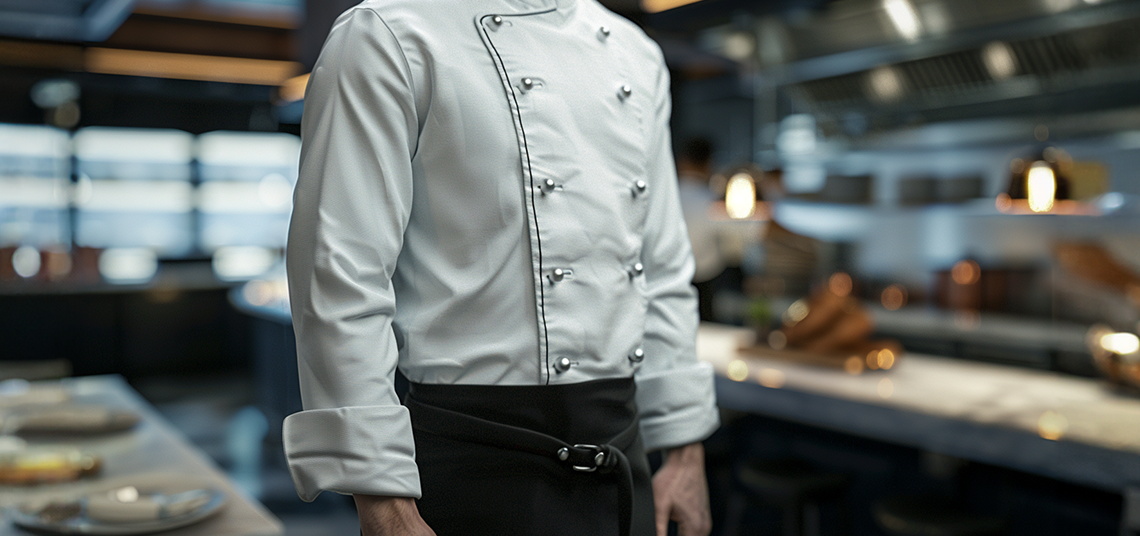
Heat and Liquid Resistance
Chefs frequently encounter high temperatures and various liquids while working in the kitchen. This requires chef uniforms to be resistant to heat and liquids. Heat and liquid resistance protect chefs from burns and spills.
Heat-Resistant Fabrics: Chef uniforms are generally made from fabrics that can withstand high temperatures. These fabrics prevent chefs’ skin from burning when they come into contact with hot surfaces. Cotton and polyester blends provide both durability and heat protection.
Liquid-Resistant Coatings: Chef uniforms with liquid-resistant features prevent hot liquids from coming into contact with the skin. These coatings are achieved through special treatments applied to the fabric surfaces. Additionally, stain-resistant fabrics make it easier to clean up spills.
Flame-Resistant Fabric Technology: Some chef uniforms are equipped with flame-resistant fabric technology. This technology prevents uniforms from catching fire and reduces the risk of burns. Flame-resistant fabrics provide an extra layer of safety in kitchen environments.
Hygiene
Hygiene is one of the most important factors in kitchen environments, and the hygienic quality of chef uniforms plays a significant role in ensuring food safety. Hygienic chef uniforms prevent the spread of bacteria and microbes, creating a healthy working environment in the kitchen.
Anti-Bacterial Fabrics: Modern chef uniforms use anti-bacterial fabrics that inhibit the growth of microbes. These fabrics minimize the formation of bacteria through special treatments, keeping uniforms clean.
Easy to Clean: The ease of cleaning chef uniforms is crucial for maintaining hygiene standards. Stain-resistant and machine-washable fabrics ensure that uniforms can be cleaned frequently, preventing the accumulation of bacteria. These features contribute to maintaining hygiene in the kitchen.
Air Circulation: Breathable fabrics increase air circulation, reducing sweating and moisture buildup. This prevents the formation of bacteria and fungi, helping chefs stay clean and dry. Air circulation also keeps uniforms fresh and comfortable.
Hygienic Design: The design of chef uniforms is also important for hygiene. Easily removable and attachable buttons allow for quick uniform changes. Additionally, the design of pockets and other details should prevent the accumulation of food particles.
4. Professionalism
Chef uniforms are a crucial element that reflect the professional identity and seriousness of chefs in the workplace. Professionalism ensures order and discipline in the kitchen while instilling confidence in both customers and the team. A professional appearance of chef uniforms and accurate brand representation strengthen the overall image of the restaurant.
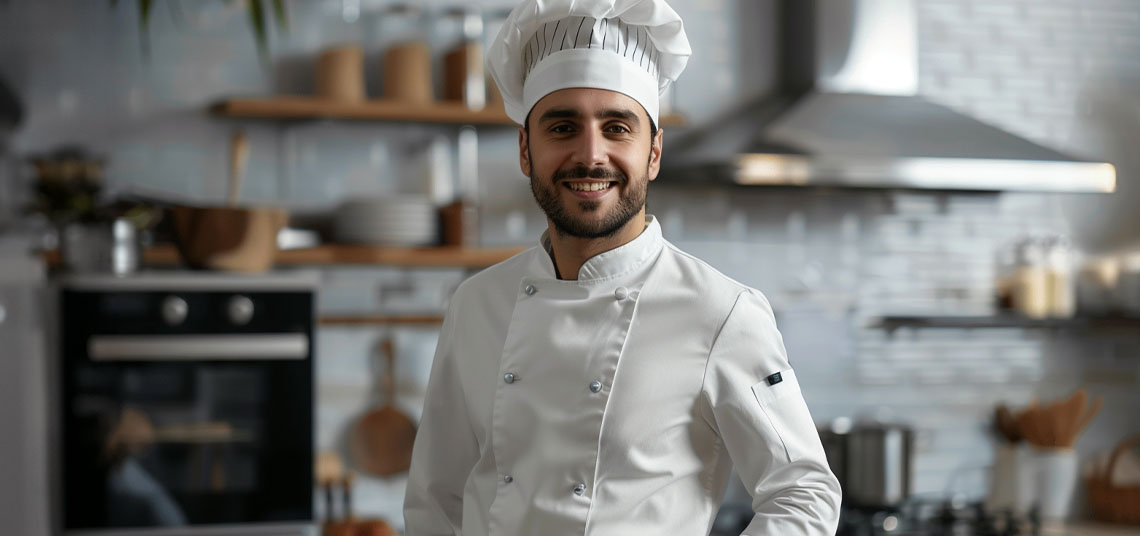
Appearance
The appearance of chef uniform reflects a chef’s professionalism and the seriousness of the kitchen. Clean, tidy, and well-designed uniforms show the respect and care chefs have for their work. A chef uniform highlights a chef’s role and status in the kitchen.
Cleanliness and Order: The cleanliness and orderliness of chef uniform help maintain hygiene standards in the kitchen. The orderly appearance of kitchen staff instills confidence in customers and enhances the perception of professionalism.
Design and Cut: The design and cut of chef uniform ensure that chefs look professional and stylish. Well-tailored uniforms that fit properly allow chefs to move comfortably while also providing an aesthetic appearance. While white uniforms are traditionally preferred as symbols of purity and cleanliness, modern designs also incorporate different colors and styles.
Personalization: Personalizing chef uniform makes chefs feel special. Embroidered names, personal logos, and unique design details make chef uniform distinctive. This personalization also enhances chefs’ commitment to their work.
Brand Representation
Chef uniforms are an important tool for representing the brand of a restaurant or hotel. Accurately reflecting brand identity and image creates a positive impression on customers and increases the prestige of the business. Chef uniform emphasize the professionalism and quality ethos of the brand.
Logo and Colors: The logo and brand colors embroidered on chef uniform reflect the identity of the business. Having the logo in a visible place makes it easy for customers to recognize the brand. Consistent use of colors enhances brand recognition and reinforces corporate identity.
Corporate Identity: Chef uniforms are part of the corporate identity of the business. All kitchen staff wearing similar and orderly uniforms strengthens team spirit and unity. Strongly reflecting corporate identity helps the business project a professional image.
Customer Confidence: Strong brand-representative chef uniform play a crucial role in gaining customer trust. Professional and brand-aligned uniforms demonstrate the business’s commitment to service quality and professionalism. This trust increases customer loyalty and protects the reputation of the business.
These uniform, beyond being just a set of clothes in the culinary world, holds great significance as a symbol of professionalism, hygiene, and safety. These uniforms, which directly affect the performance, comfort, and safety of chefs, play a critical role for everyone working in the kitchen. The four essential features of chef uniforms – durability, comfort, safety, and professionalism – have been meticulously designed to best meet the challenges chefs face in the kitchen.
Durability ensures that chef uniform are long-lasting and resistant to frequent washing. This reduces the need for chefs to constantly buy new uniforms, resulting in cost savings. High-quality materials and sturdy stitching allow the uniforms to withstand intense working conditions.
Comfort keeps chefs comfortable during long working hours. Breathable fabrics help keep chefs cool by reducing sweating. Ergonomic designs and flexible fabrics allow chefs to move freely in the kitchen, enhancing work efficiency.
Safety is an indispensable aspect of chef uniforms. Heat and liquid-resistant fabrics provide protection against potential accidents in the kitchen. Anti-bacterial properties maintain hygiene standards, ensuring food safety. The ease of cleaning and hygienic nature of chef uniform create a healthy working environment in the kitchen.
Professionalism is paramount in the appearance and functionality of chef uniform. A clean and tidy chef uniform demonstrates the chef’s respect and seriousness towards their job. Uniforms that are strong in brand representation positively impact the image of the restaurant or hotel. Personalized details on chef uniform reflect the brand’s identity and instill confidence in customers.
These uniform is essential for the safety, comfort, and professionalism of kitchen staff. A well-designed and high-quality chef uniform enhances chefs’ performance while maintaining order and discipline in the kitchen. Considering all these features of chef uniforms, choosing the most suitable uniforms for professional kitchens is of great importance.
Recognizing the importance of chef uniform in a professional kitchen, you can visit the Uniforium website to select the highest quality and most durable uniforms. Uniforium is an ideal choice to meet your kitchen needs with its wide range of products and quality chef uniforms. For more information and contact, you can browse the website and choose the most suitable chef uniform for you. By reaching out to Uniforium‘s contact details, you can get support for your professional kitchen needs.
